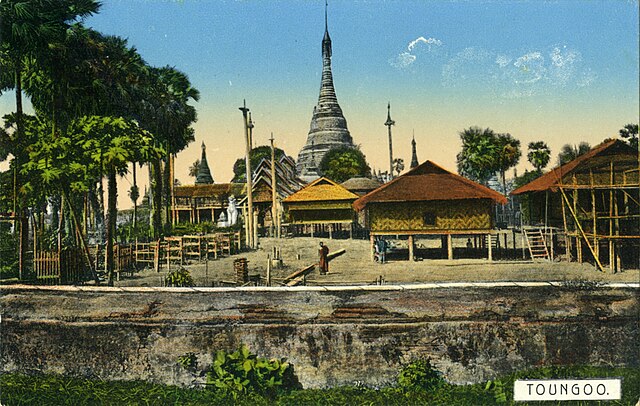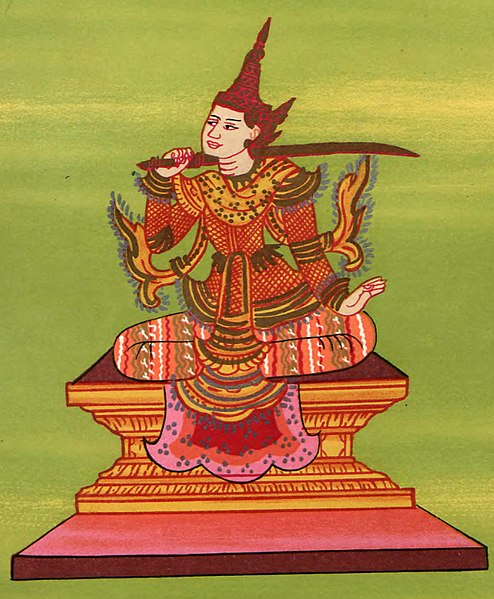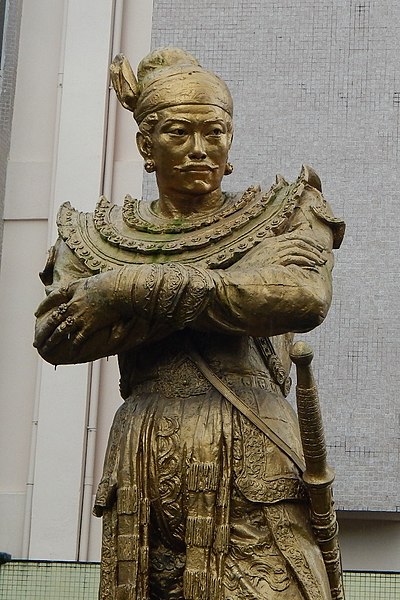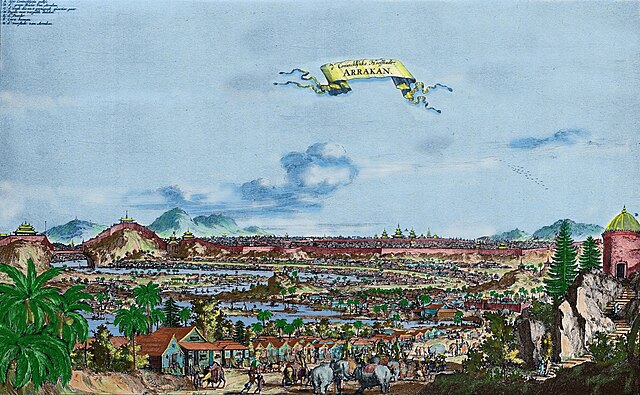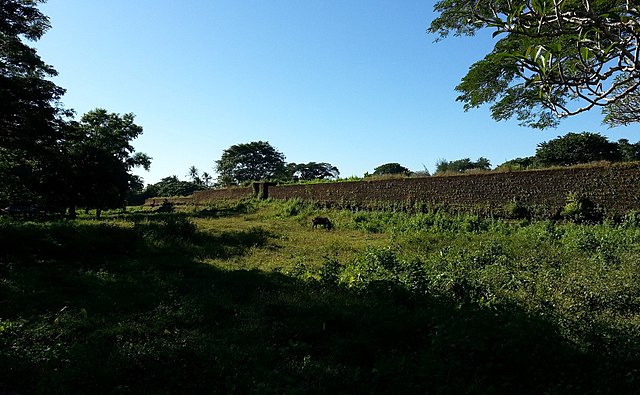The First Toungoo Empire was the dominant power in mainland Southeast Asia in the second half of the 16th century. At its peak, Toungoo "exercised suzerainty from Manipur to the Cambodian marches and from the borders of Arakan to Yunnan" and was "probably the largest empire in the history of Southeast Asia." The "most adventurous and militarily successful" dynasty in Burmese history was also the "shortest-lived."
A depiction of old Toungoo (Taungoo) from a later period, though the 14th-century Toungoo might not have been much different.
King Tabinshwehti depicted as the Tabinshwehti Nat
Statue of King Bayinnaung in front of the National Museum in Yangon
Portrait of Burmese nobility painted by Qing dynasty in 1751
The Kingdom of Mrauk-U was a kingdom that existed on the Arakan littoral from 1429 to 1785. Based in the capital Mrauk-U, near the eastern coast of the Bay of Bengal, the kingdom ruled over what is now Rakhine State, Myanmar and southern part of Chittagong Division, Bangladesh. Though started out as a protectorate of the Bengal Sultanate from 1429 to 1531, Mrauk-U went on to conquer Chittagong with the help of the Portuguese. It twice fended off the Toungoo Burma's attempts to conquer the kingdom in 1546–1547, and 1580–1581. At its height of power, it briefly controlled the Bay of Bengal coastline from the Sundarbans to the Gulf of Martaban from 1599 to 1603. In 1666, it lost control of Chittagong after a war with the Mughal Empire. Its reign continued until 1785, when it was conquered by the Konbaung dynasty of Burma.
Image: Vista de Mrauk U, ou Arrakan (cidade de Arracão) no primeiro plano o bairro português
City walls of Mrauk U
Chittagong and Arakan in 1638

